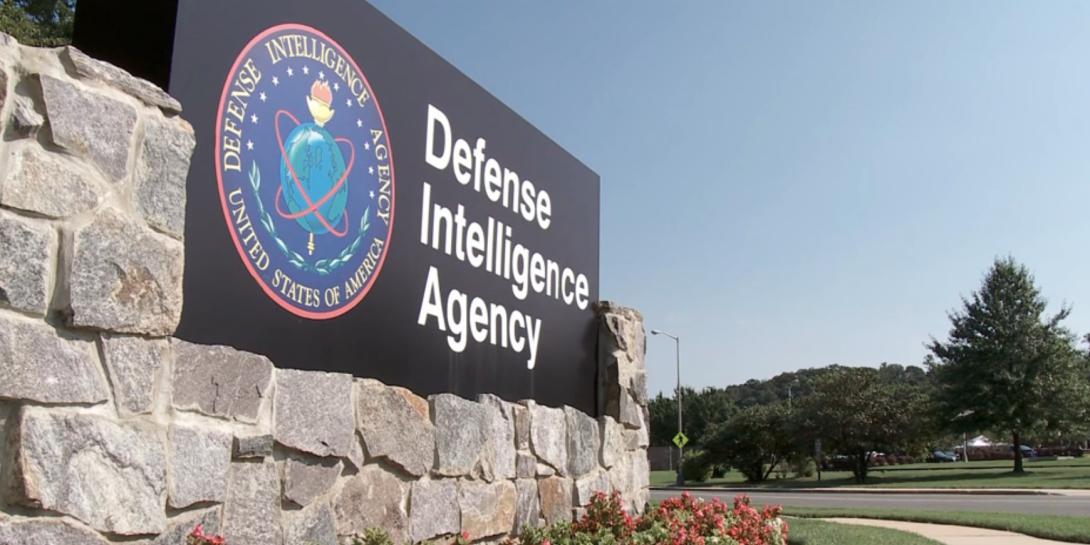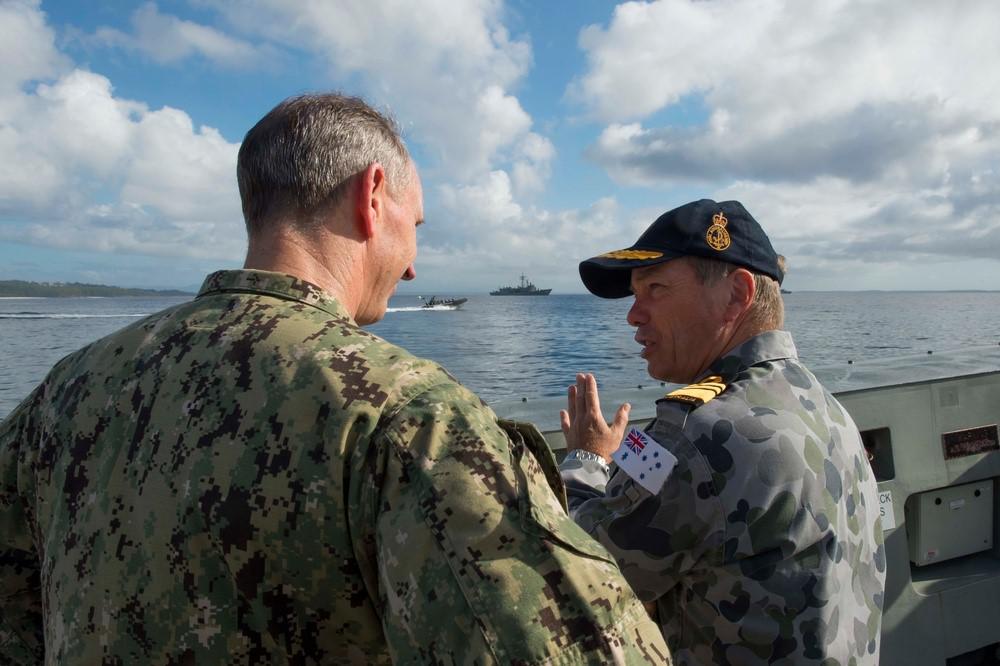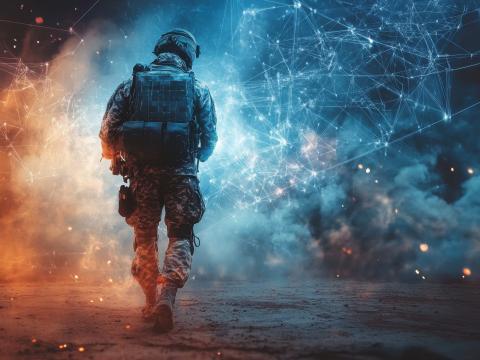Interoperability Is the Key to Partnerships
At the U.S. Defense Intelligence Agency, the deputy director for Commonwealth Integration is working to grow the agency’s operational and functional relationships between Australia, Canada, New Zealand, the United Kingdom and the United States, referred to as the Five Eyes nations. Since improved information sharing is at the heart of partner integration, the leader, Australian Army Maj. Gen. Michelle McGuinness, is leveraging the capabilities, authorities, technology and innovation of these most trusted partners in order to maintain an asymmetrical strategic advantage against near-peer adversaries.
Gen. McGuinness coordinates Five Eyes integration initiatives across policy, capabilities, technology and workforce structures, negotiating the collective cultures of the five nations. She also works in support of the broader defense intelligence enterprise.
“My role in a nutshell is really to ensure that DIA is integrated with its Five Eyes partners to the maximum extent possible as permitted under legislation and policy,” Gen. McGuinness says. “My vision is to completely harness the critical, force-multiplying and unparalleled benefits of this trusted intelligence partnership in support of delivering an overwhelming advantage for our warfighters and of course decision makers. I think the position is the practical embodiment of the major partner integration lines of effort that is consistently expressed at the national and defense level.”
The DDCI reports to DIA Director Lt. Gen. Scott Berrier, USA, and as Gen. Berrier’s principal advisor for Five Eyes integration, she has to ensure partner interoperability is ever present in the DIA environment. Gen. McGuinness also identifies opportunities for appropriate burden-sharing between the United States and the four Commonwealth nations.
“I think ultimately what he wants is to work with trusted partners in getting after the most pressing challenges that he faces both today, and in the future,” she says. “To effectively do that he needs a normalized baseline of integration across systems and capabilities, and of course a strong culture for information sharing based on trust.”
The job is not without its challenges, Gen. McGuinness says, noting that there is “inherent friction” in integration. “A colleague once told me that everyone loves integration until it comes to them,” she states. “And he was right. Integration doesn’t just happen. It requires persistent effort.”
Gen. McGuinness also has to confront the natural culture of the intelligence community (IC) of being wary of sharing information—amplified across different countries. “It can be a little bit countercultural within the intelligence community where all persons first and foremost were trained to protect information,” she says. “I am working closely with a number of directors across DIA, and we’ve had good success in removing some of the barriers to a better integrated posture. There’s a range of security, policy, technical challenges that are just innate to having five partners sitting side by side and working together. And we have been very good at that in the deployed operational environment. So, the requirement to share in order to operationalize is really important.”
At the policy level, however, the DDCI continues to remove barriers to information sharing. “All Five Eyes nations have some kind of antiquated sharing policies,” Gen. McGuinness says. “We have analog policies that stem from a time that didn’t really foreshadow the developments and opportunities offered today by emerging technologies so, we’re working through those challenges.”
To support the increased integration of these “most trusted partners to the maximum extent possible,” Gen. McGuinness and the DIA are pursuing “seamless” technical solutions for information sharing, data management, security, authentication, vetting and authorization, among other technologies. Two of the DDCI’s two priorities include the so-called Torch and MARS initiatives.
Torch is the releasable tier information system in the Five Eyes common operating environment, which runs on the Joint Worldwide Intelligence Communication System, or JWICS, fabric. Named for the successful allied World War II campaign in November 1942 that gained victory in North Africa—and is also a nod to DIA’s torch symbolism—the Torch system offers allies a new, reliable and secure sharing environment.
“I want to say the significance of this cannot be overstated,” Gen. McGuinness noted at DIA’s annual Department of Defense Intelligence Information System (DoDIIS) conference last December. “Torch was built with integration in mind from day one. The Torch environment sets DIA up for continued success, pushing the cultural and traditional boundaries of the Defense Department’s top-secret environment. Torch will incorporate policy and technical developments to provide an enhanced user experience while forcing critical conversations about trust and risk, particularly as it relates to partner integration across the DIA and the broader defense intelligence enterprise.”
The DDCI contends that Torch will revolutionize the way in which the Five Eyes partner nations collaborate. It will support the sharing of unprecedented amounts of data, underscore the importance of metadata and improve data governance. “As we move into this more integrated and partner-focused environment, [we will] deliberately shift toward an operating model that is properly inclusive of partners and one that incorporates national and international data standards,” she noted at DoDIIS. “It’ll revolutionize how we integrate and operationalize our partnership. It’ll save time, it’ll save effort and I believe it will save lives. With Torch, there is no technological reason that we can’t share as a matter of practice, that is to share that which we can to the maximum extent possible while protecting that which we must.”
Meanwhile, MARS—DIA’s Machine-assisted Analytic Rapid-repository System—will incorporate greater amounts of data from a wider array of sources and leverage artificial intelligence and machine learning. It will enable “a deeper, more contextual understanding” of adversarial activities and capabilities, thereby reducing decision-making time for both tactical and strategic leaders.
“Very early in my tenure, I fixed my attention fairly squarely on MARS,” she shares, speaking of January 2021, when she first took office. “This is really a system that in my mind is set to fundamentally changing the way analysts operate as we employ artificial intelligence and machine learning to perform the more mundane tasks. Its predecessor, the MIDD, was a critical enabler for the Five Eyes partners and had been for over three decades, used in the validation and sharing of foundational military intelligence. MARS utilizes today’s technology to produce a far more dynamic capability combining new data sources with traditional foundational military intelligence. It really comes with the promise of far more efficient and effective information sharing, indeed at the speed of relevance, not only for the Five Eyes partners but also with yet to be determined collision of the future.”
MARS will be rolled out to partners shortly, so that they can use and contribute meaningful information to military intelligence. “The challenges of big data are clear for everyone so, sharing that across the Five Eyes nations, and ensuring we remain interoperable [is important],” she emphasizes.
The DDCI is examining other technologies such as “cutting-edge, robust, safe and explainable” artificial intelligence—outside of the MARS application—premier cybersecurity and revolutionary computing capabilities to also underpin and enhance information sharing, she says.
The general’s previous roles in the Australian and U.S. IC, including her previous role as director general of counter proliferation and terrorism at the Australian Defence Intelligence Organization, helped her understand DIA’s capabilities and its analysts, across Science & Technology, the terrorism directorate and medical intelligence. “I’ve been quite lucky to be assigned to several roles that have put me in good stead for this position, including work here in the United States a couple of times,” she shares. “It really did offer me a very contemporary refresh on the IC’s most pressing intelligence challenges as well as great senior leadership engagement.”
The need for effective Five Eyes partner integration “is more critical today than at any time before,” she adds, given the challenges stemming from the global pandemic, cyber attacks, threats to space operations, climate change, violent extremism, adversarial advanced weapons, supply chain issues and rampant intellectual property theft.
“These threats coupled with rapid technological change and emboldened actors and competitors, fixated on challenging us in every domain, absolutely amount to a crisis,” she noted at DoDIIS. “The strategic environment we find ourselves in today is defined by profound threats that show no respect for national boundaries. We are confronted with dangers that cannot effectively be addressed by one nation acting alone in isolation.
“In this most extraordinary strategic security environment, integration, information sharing and impactful partnerships have never mattered more,” Gen. McGuinness states.







Comment
Great article and very
Great article and very iformative
THANKS
THANKS
Comments